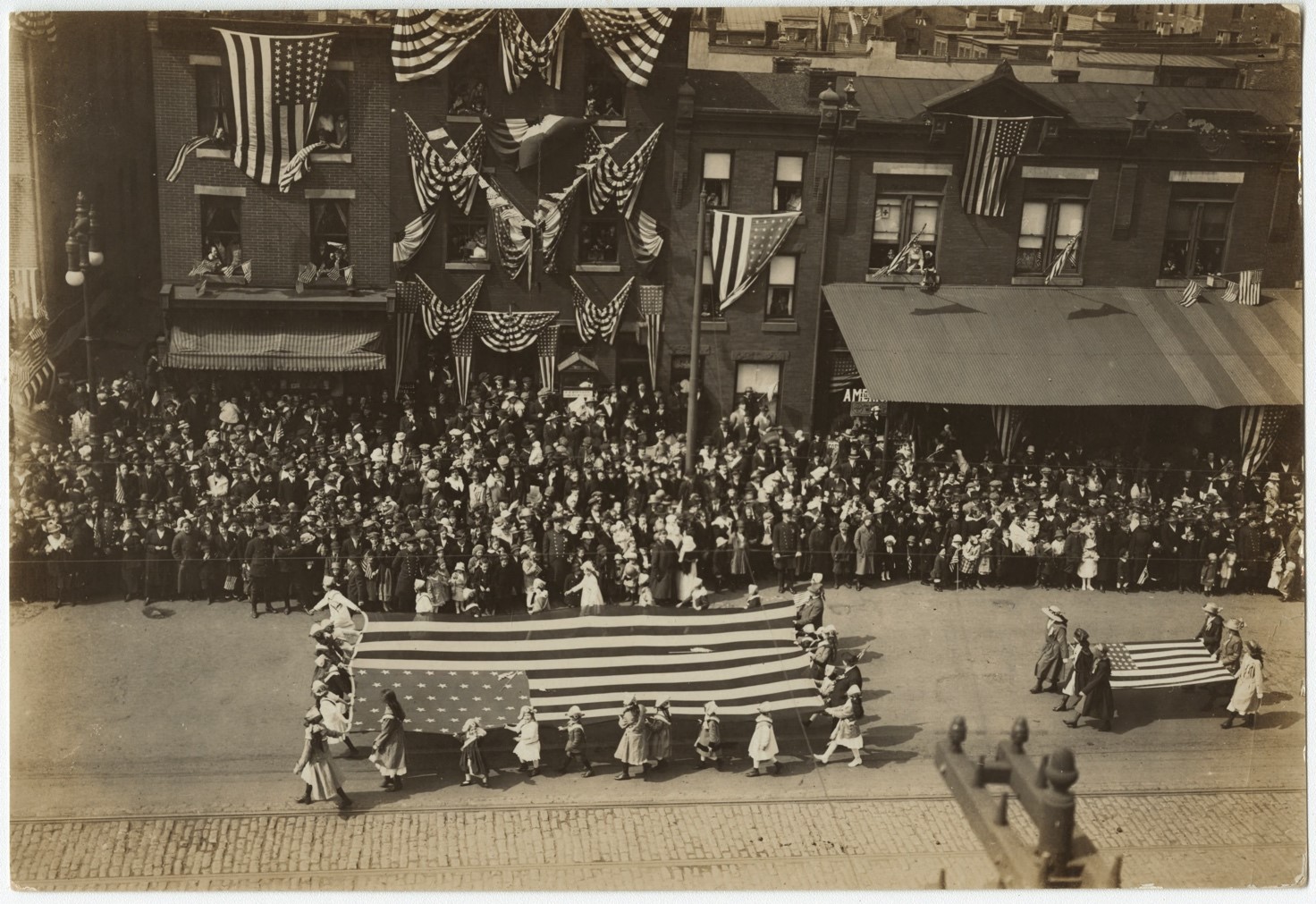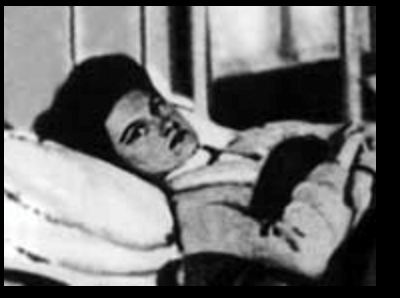
In 1918, Philadelphia held a celebratory Liberty Loan parade to promote American citizens’ support for the war. The United States had long delayed entering the Great War raging in Europe. Once in, President Woodrow Wilson presided over an enormous propaganda effort, which included the parade and “liberty loans” (the name given to war bonds). The spectacle was attended by huge crowds, and war-bond salesmen were busy on the sidelines.
But there was a problem. Wilson, as well as British and French leaders, all worked with a compliant press corps to suppress reports of a spreading “Spanish” flu for many months.[1] In truth, the pandemic was both widespread and deadly – the deadliest in human history, as far as we know. At least 30 million died (50 million is another common figure; one recent estimate said up to 100 million).
Reactions across America to rumored high death tolls were varied – a reflection of the extraordinary diffusion of power in the United States, especially in matters involving public health. As legal historian Polly Price put it, a national strategy may well be elusive: at the least, it would be “complicated if not impossible.”
In 1918, Philadelphia’s parade was disastrous. Within three days, every hospital bed in the city was full, within six weeks, the death toll was 12,000. Other cities’ caution proved much savvier. St. Louis was a model – it closed schools, parks, libraries, churches, courts, and more, and had the lowest death toll of any major city.
Such divergent responses are made possible by the long-lived rigor of the “police power” that is vested in states. American federalism, the divided sovereignty that splits national and local government responsibilities, means that more than 2,600 local boards of health are the front line. The national government has power at the borders, but once inside the country, that power evaporates. Even when President Trump ordered cruise ship passengers and evacuees from China to be quarantined, local administrators actually administered and managed that process.
The police power has proven among the most powerful tools of government, especially during epidemics. As Michael Willrich put it in his aptly titled book Pox, “Epidemic disease, like war, is the health of the state.” Defined as the authority to ensure the health, welfare and safety of a state population, the police power has sustained drastic responses to epidemics – so drastic, that key questions of individual liberty and bodily integrity have been trampled.
At the turn of the twentieth century, outbreaks of smallpox, bubonic plague and typhus unleashed “virus squads” across the country. In New York City, doctors, backed up by military-style support from local police, forcibly vaccinated residents. Especially in African American neighborhoods, these squads chased people into churches, up fire escapes, and dragged terrified children from their parents’ arms to vaccinate them with the painful and sometimes dangerous smallpox vaccine.

|
Mary Mallon, known popularly as “Typhoid Mary,” was an Irish immigrant who carried the typhus bacteria but had no symptoms. She worked in New York as a cook for wealthy families, but only for a few months at a time, as typhus infections followed her. She was unrecalcitrant when urged to “self isolate,” and eventually was quarantined for more than 25 years on North Brother Island in the East River. Photo courtesy Wikimedia Commons.
|
Such practices were challenged in 1905 in the Supreme Court case Jacobson v. Massachusetts. Lutheran minister Henning Jacobson called the process of vaccination a “state sacrament” to which he objected on religious grounds. He also had a history of bad reactions to the smallpox vaccine. As a child, he was ill for weeks after being vaccinated, and his own son had suffered a similar illness. He also reported that he had seen many other bad outcomes from this vaccine. He described the vaccine this way: “We have on our statute book a law that compels … a man to offer up his body to pollution and filth and disease, that compels him to submit to a barbarous ceremonial of blood-poisoning.”[2] Jacobson lost his appeal, especially because the Supreme Court invoked the analogy of epidemics to war. The Court upheld blatant violations of persons and property during both kinds of emergency, concluding that “on any other basis organized society could not exist.”[3]
This overwhelming mandate has often been subject to abuse, as in the racism of the New York virus squads. Legal historian Felice Batlan has chronicled rampant anti-Chinese bias during plague outbreaks in California and Hawaii. In 1899, several cases of bubonic plague appeared in Honolulu, in the area known as “Chinatown,” but home to Japanese and Native Hawaiians as well as Chinese residents. In response, the Honolulu Board of Health, composed of three white doctors, ordered that no one could go into or out of Chinatown, and the National Guard enforced the rule. Residents of Chinatown were subjected to twice daily home inspections, and anyone found to be ill was quarantined in a special camp outside the town. Those camps were themselves undersupplied, especially but not only with food. But the plague continued to spread. The Board decided to burn all structures that had housed anyone who was ill. At least a thousand buildings were burned to the ground. Finally, the entire neighborhood was destroyed when one of the set fires raged out of control. 4000 were then relocated to the camps. On Maui, the Board went straight to burning.
On the mainland, China was called the “breeding place of King Plague,” and the Chinese were believed to have brought their unhygienic lifestyles with them when they crossed the Pacific, threatening innocent white Americans. The Chinese exclusion laws of the late nineteenth and twentieth centuries were supported by theories of Chinese filth and disease. Only judicial intervention prevented the use of an experimental plague vaccine on all residents in San Francisco at the same period as the Honolulu fire, but calls for drastic action persisted, based clearly on race rather than rates of infection.
Echoes of such anti-Chinese sentiment have erupted in the current corona virus epidemic. President Trump and some of his cabinet have called the corona virus the “Chinese virus.” An article by Congressman Ted Lieu of California charged that xenophobia lay behind the term, and that in “a time of unease and uncertainty, such language stokes panic and doesn’t get us closer to eradicating this virus.” Asian Americans,” he said, “have been insulted or otherwise discriminated against because of such rhetoric.” President Trump’s insistence on labeling the corona virus a “Chinese virus,” appears to be connected to a rise in hate crimes.
Most historians would argue the world has long been closely interconnected. We are connected globally through international travel and especially the internet and social media. Our sense of control over our world is illusory. But given the police power, we should be concerned about the spread of racism and nationalism as well as the corona virus. There have been important victories through legal action in such situations, but not reliably.
Instead, awareness of the ways that other epidemics have come and gone should provide some sense of the patterns that have led to violations of essential rights that were grounded in a desire to divert fear into anger. Most of all, we can recognize the signs of unwarranted blame on any group as an excuse, an attempt to stoke dangerous recrimination. Building community through inclusion and respect, as well as making all treatments equally available, are the only time-tested effective responses.
Sarah Barringer Gordon
Arlin M. Adams Professor of Law and Professor of History
University of Pennsylvania
With special thanks to the students of History 169 at Penn, who we hope are all safe and well, and to whom this essay (and the underlying lecture on which this shorter version is based) is dedicated.
[1] There is no evidence that the flu actually originated in Spain. One historian even argues that its true origin was in Kansas.
[2] Quoted in Michael Willrich, “’The Least Vaccinated of Any Civilized Country’: Personal Liberty and Public Health in the Progressive Era,” Journal of Policy History, 20, no.1 (2008), 88.
